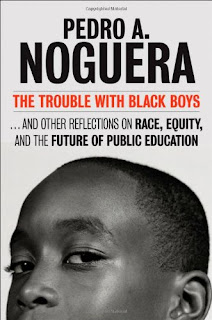Suspension and Expulsion in public schools
A reflection on the book The Trouble with Black boys by Pedro Noguera. As I was reading this wonderful book, I felt as if I am reading about our schools in Morocco. Schools that serves minorities , in the USA, as more or less ignored and do not give a good quality of education.
In fact, I find it a bit hard to determine what part of the chapter that is deeply refecting how my schooling was. Hence, I find myself recalling some of my experiences back in school time through reading every single line. Back in my middle and high school period, I could see how my school then was always suffering from lack of some teachers even. Belonging to a rural remote area was enough for the government and the people in charge for educating us to keep a blind eye on our needs and expectations. I still recall how suffocated we were and how authoritative teachers and administrators were. Many students were victims of the “expel, punishment, and exclusion” policy and are now still struggling to find settlement in their lives. Unfortunately, they had been spot to be the “bad apple” and removed from the school which predicts to some extents their social integration as well. Society will not also treat an individual who is excluded from school equally.
In addition, as teacher, I could see the vignette the author started the chapter with embedded unfortunately in our schools. Beside mine, many schools’ administrators try to find a way to kick out and punish undisciplined students to get rid of them believing that it is the only and effective way to guarantee ‘safety and order’ in the school. As the author states in this chapter, the schools immediately never questioned why a student is behaving and doing well with certain teachers while disruptive and obstinate with others. I have talked to some disruptive students in some classes who are good in mine and find out that students do not really feel interested and engaged in what the teachers are teaching them. I am for what Pedro A. Noguera stated that students get bored and frustrated and resort to misbehaving in the classroom. Schools focus on controlling and fixating students’ behaviors and forget the main reason students are there for. In doing so, fostering high academic achievements and success are put the last. This at certain time tells those among the victims of the ‘bad apple’ policy that the school is not taking into considerations the students’ expectations and needs. Therefore, it is normal that these students become disobedient and disruptive.
To my mind, as the author states, schools must reconsider their policies towards treading students, especially needy ones as they already have enough problems. Schools must equally offer support to this kind of people compared to their counterpart within the society. The ‘no child left behind’ approach should substitute the ‘removal and exclusion’ policy. It is time to understand that no one is born to walk the same path his ancestors had walked before him or her, but rather it is care, encouragement and enthusiasm that make a difference in everybody’s life. Thus, teachers and administrators have to treat students with ‘kindness’, care about them and seek ways that cater for their needs and expectations and make them feel valuable and important within the process of learning. As Victor Hugo once said, ‘he who opens a school door, closes a prison’. However, this can never be achieved if schools keep embedding the prison style of punishing, expelling, excluding and, dealing with people.
